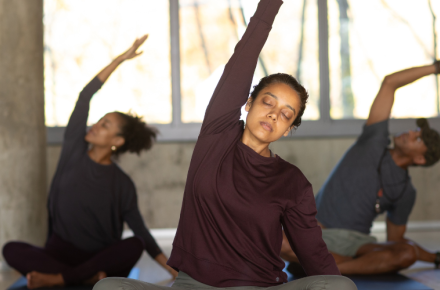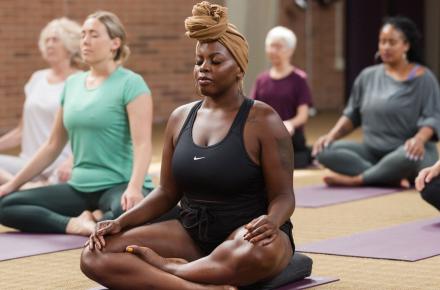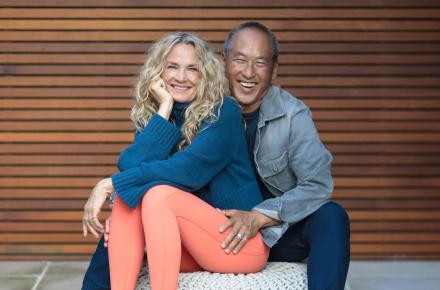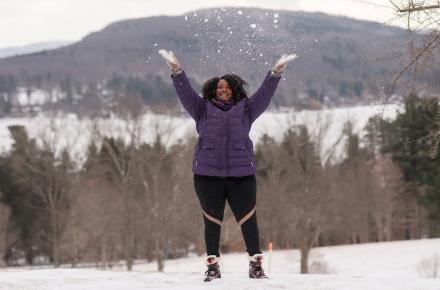Meditation: A Dance Between You and Life

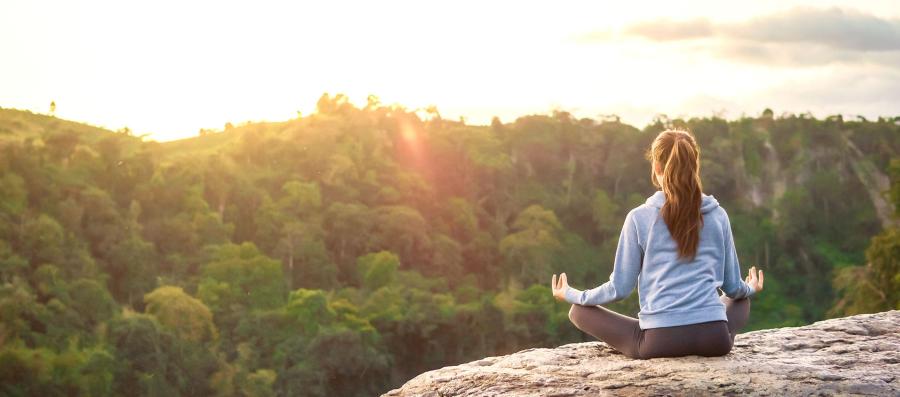
Meditation is a dance between you and life—a rhythm of body, breath, nature, emotion, infinite space, and everything in between. It’s an unfolding of what you are, what you came from, and what you’re becoming. The point is not to achieve a particular experience—the point is to recognize more of what you already are: unique, infinite, whole, interconnected, and always changing. A river is constantly in a state of meditation, moving and responding to gravity. Meditation can run through your everyday life, and allow you to find a dynamic relationship with your inner and outer worlds.
The human mind is an amazing and complex system that filters raw, undivided information from the senses into digestible experiences, which usually have a particular context: friend, enemy, food, sunshine, music, money, pleasure, pain, good, bad, etc. Mind is “who” we are: the persona, story, beliefs, judgments, the gathering of knowledge and memory. The mind is brilliant and necessary but, like anything else, should not hold the reins 100 percent of the time.
Awareness holds the mind, with all its waves, within the ocean of universality, cooperation, creativity, and transformation. Meditation is living in awareness, which includes the waves of the mind: sensations, thoughts, emotions, fears, desires. If awareness were the sky, mind would be the weather. There are clouds, rain, thunder, and sunshine, but the sky is always there.
Under the umbrella of meditation, there are countless techniques to relax, focus, and awaken awareness. Before experimenting with a particular technique, clarify why you want to meditate, and what you’re seeking. There are techniques to cultivate calm, relaxation, focus, endurance, clarity, energetic experiences, sensation, gratitude, compassion, etc. Do you want to experience insight and illumination? Do you want to sleep better, think more clearly, ease anxiety, accomplish goals, feel more alive, or experience contentment? Do you simply need some quiet time alone? If the reason why is not obvious yet, allow that inquiry to be part of your practice.
It can be helpful to begin by experimenting with different techniques to see what feels natural. Mantra, breath-based meditation, sound meditation, walking meditation, sensory meditation, open-eyed meditation, yantra, gratitude meditation, and loving-kindness meditation are just a few styles that can lend themselves to different experiences. Once you find a technique that feels right for you, commit to it for a specified number of days, weeks, or months, and observe how your practice changes and evolves over time. With any technique, there will be a range of experiences and challenges that arise, and it’s often those challenges that lead to insight, inspiration, and self-confidence.
If you create a schedule for practice, emphasize frequency over perfection. Give yourself plenty of space to be focused on some days, and distracted on others. Start with shorter periods (10 to 15 minutes) so that it’s easier to practice regularly. Create a time and space when you won’t be interrupted and where you’ll feel safe to explore the sensations, thoughts, and emotions that surface. Set a timer so that you won’t need to keep looking at the clock. The mind will eventually begin to relax, and become more awake and aware—but remember that the mind is naturally in a state of oscillation between the external environment and your internal world, so don’t expect that to ever go away. If it quiets, it quiets.
Meditation is not limited to sitting still on a cushion. As your practice continues to evolve, and the mind is given space and time to settle, you may find you can begin to let go of the technique, and allow awareness to flow—both on the cushion and throughout your day—without a separation between “regular life” and “practice.” You can be in a state of meditation anywhere you are, whatever you’re doing. Moving from an anxious state into a meditative state has more to do with how you engage with an activity, rather than what it is you’re doing. Feel your body becoming still, or moving in cooperation with your surroundings. Feel the rhythm of your heart beating and breath flowing. Feel your environment. Watch all that is happening. Watch what your intuition says and how it wants to respond to the moment. Most importantly, trust that you’re exactly where you’re supposed to be and know exactly what you need to know. There’s nothing more you need to achieve or become in order to meditate. All you need to do is be yourself.
Two Daily Practices for Meditation
Sound
Find a comfortable and quiet place to sit, stand, or lie down. Allow your body to be as stable and relaxed as possible. Let your breath be natural, and become aware of the sounds around you. Can you hear sounds close by? Far away? Do you notice the sounds of your own body and breath? As you continue to relax and breathe, allow sounds to come into your awareness, sustain for a certain amount of time, and fade away. As each sound fades away, be awake for the next one. Try not to attach to or reject any particular sound. Allow them all to come, stay, and go.
Walking Meditation
Find a safe and quiet place to walk, inside or outside. (If you’re inside, you can walk back and forth between two walls, or in a circle.) Keep your posture tall and relaxed. Allow your gaze to be soft on the ground in front of you. Begin to walk, slowly enough that only one foot is moving at a time. With each step, notice your foot lifting off the ground, moving in space, and planting firmly on the ground. Set an intention to walk for a certain amount of time, rather than a certain distance, so that the aim is not to reach a particular place. As you walk, become aware of the sensations of walking. Awareness will naturally wander elsewhere, and it will naturally come back to the sensations of walking. Let it happen the way it does.
© Kripalu Center for Yoga & Health. All rights reserved. To request permission to reprint, please e-mail editor@kripalu.org.


























